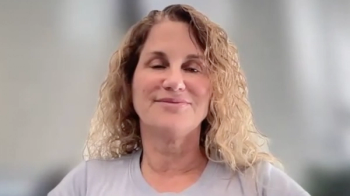
Temsirolimus Tops Bevacizumab in High-Risk Rhabdomyosarcoma
Patients with first relapse rhabdomyosarcoma treated with a chemotherapy backbone of vinorelbine/cyclophosphamide plus temsirolimus had a superior event-free survival compared to patients treated with the same backbone plus bevacizumab.
Patients with first relapse rhabdomyosarcoma (RMS) treated with a chemotherapy backbone of vinorelbine/cyclophosphamide plus temsirolimus had a superior event-free survival compared to patients treated with the same backbone plus bevacizumab, according to the results of a Children’s Oncology Group randomized phase II trial (abstract 10003) presented at the 2014 ASCO Annual Meeting.
“Temsirolimus has been selected by the Children’s Oncology Group for further investigation in newly diagnosed patients with intermediate RMS,” said study presenter Leo Mascarenhas, MBBS, MD, MS, of Children’s Hospital Los Angeles.
According to historical data, children and adolescents diagnosed with RMS do poorly following relapse with a median survival of less than 1 year and a long term survival of less than 20%.
For this study, a chemotherapy backbone of vinorelbine and cyclophosphamide was selected because phase I and phase II clinical trials showed that vinorelbine was active as a single agent in relapsed RMS. In addition, European trials have shown that the combination of the drugs caused objective responses in relapsed RMS.
This study was designed to determine the feasibility of administering bevacizumab and temsirolimus with intravenous vinorelbine/cyclophosphamide in patients with first relapse of RMS. Patients were aged less than 30 years with first relapse or refractory of RMS.
Patients on Regimen A were treated with vinorelbine/cyclophosphamide plus 15 mg/kg bevacizumab on day 1. Patients on Regimen B received the same backbone plus 15 mg/m2 temsirolimus on days 1, 8, and 15. Myeloid growth factor support was started on day 9 and each patient could get a maximum of 12 courses of treatment with evidence of progressive disease. Local control was permitted but could not be given with concurrent temsirolimus.
The study was suspended in July 2013 at the second interim analysis. At that time, 87 patients were enrolled in the study.
At the second interim analysis, the study had reached its primary endpoint, showing a superior event-free survival of temsirolimus. The 6-month event-free survival in patients assigned temsirolimus was 65% compared with 50% for patients assigned bevacizumab.
Mascarenhas also presented the 1-year event-free survival results, which continued to show a significant benefit for temsirolimus. At 1-year, event-free survival was 43% for the temsirolimus arm compared with 12% for bevacizumab (P = .015). However, data showed no difference in the overall survival at 2 years.
In addition, there was no significant difference in the objective response rate between the two arms (bevacizumab: 27.5% vs temsirolimus: 47.4%). Mascarenhas pointed out that there was less disease progression in the group getting temsirolimus (10% vs 28%).
Overall, treatment was well tolerated with no unexpected toxicities observed. Three dose limiting toxicities occurred on the bevacizumab arm and eight occurred with temsirolimus.
Leonard H. Wexler, MD, of Memorial Sloan-Kettering Cancer Center, was asked to discuss the results of the abstract.
“We heard from Dr. Mascarenhas that the addition of temsirolimus to cyclophosphamide/vinorelbine regimen leads to improved 6-month event-free survival in kids with first relapse or refractory RMS, but the question remains about how to incorporate, or whether to incorporate, these results into the treatment of patients with newly diagnosed intermediate risk RMS,” Wexler said.
Newsletter
Stay up to date on recent advances in the multidisciplinary approach to cancer.


















































































